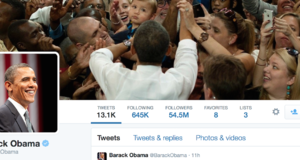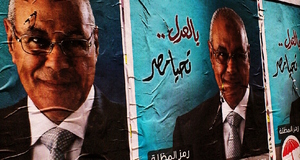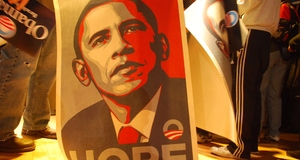From Interstate - Journal of International Affairs VOL. 1998/1999 NO. 2Democracy in Action: Witnessing the Student Guild Elections of 1999
By
Interstate - Journal of International Affairs 1999, Vol. 1998/1999 No. 2 | pg. 1/1
KEYWORDS:
On the 23rd of February, I casted my vote at around 11:00 am in the morning at the Student Union. For some, voting is just a routine exercise but somehow, I do feel that the candidates that are running for this election is really at the mercy of the voters. It took me about a minute or two to decide whom to vote for and cast my vote. Within that minute, I do feel some kind of inner power in me that I am able to decide the fate of these candidates and the feeling is just surreal. Of course, this elections is just one of the many requirements of democracy and by far, is one of the most important requirement. The Guild elections may not be as glamorous as the national elections in the United Kingdom, but it provides a ‘prototype’ of democracy. In other words, the Guild elections are more of an experimental type to the bigger elections such as the national elections. However, I came to know that the system of elections is quite different from what I have seen, having witnessed two important national elections over the last ten years in two different countries. The Guild uses an electoral system called the ‘Proportional Representation by the Single Transferable Vote’ or PR (but also known as STV). It is far different from the ‘first pass the post’ system where we all put an ‘X’ to our preferred candidate. The PR system requires the voter to put preferences on their choice of candidates. For example, at the Guild Elections, there are four candidates competing for the Guild president and so I voted candidate ‘Y’ as my first preference and candidate ‘Z’ as my second preference and so on. This system is very more democratic than the first pass the post system since we get more choice on whom to vote for. For example, I may say that candidate ‘Z’ is better off than candidate ‘T’ whom I voted as my third preference. In other words, it is more or less like a list of groceries where on the top of the list is the ones that you want to get and at the bottom of the list is the least you want to get. This may be complicated to understand for some but I assure you that when it comes to counting the ballots, it can be very tricky. So, I decided, with the permission from the electoral managers who run these elections, if I could witness the counting of the ballots after the polls close at 7.00 p.m. that night and they granted my request. First, the ballot box came into the committee room one by one and is emptied, sorted and counted one by one to ensure that everything is correct. When this is done, ballot counters were asked to leave as the ‘Core Electoral Committee’ convened for a ‘Tribunal’. The nature of this ‘Tribunal’ is to discuss on whether or not the candidates contend the elections democratically. This is extremely confidential and no one is allowed, other than the Core Electoral Committee, to stay and listen to the ‘Tribunal’. All I could say about this ‘Tribunal’ is to see whether the election is ‘free and fair’ and in accordance with the rules set by the Guild. This Tribunal, in my opinion, is the ‘high point’ of democracy because they discuss whether or not the candidates compete at the elections fairly. When that is done, at precisely 9.15 p.m., the counting of the ballots began and I was invited to ‘count’ the ballot papers. I did accept that offer. The PR system is complicated and it does take a while to get used to it. The most difficult ones (the ‘fun’ bits, as one electoral manager puts it!) were the ones where there are six candidates contending for four posts in the elections. The candidate who get the most ‘first preference’, as long as the candidate gets over the quota and also gets the most votes gets elected. This is the first stage of the PR. There are five stages to go. We then recount the ballot papers again and this time, we were ask to find a candidate with the most ‘second preference’. While we were busy counting, the electoral committee transfers the access quota to all the other candidates. Mind you that this process of giving the access quota needs a calculator at hand since there are multiplication and divisions to make. Incidentally, I wasn’t sure why we were all divided up into four tables but now I can make sense on why the electoral committee purposely did just that. One of the tables recounted the votes won by the first candidate not because there was a mistake, but they were looking at the ‘second preference’ by the very same people who voted the ‘first preference’ for that candidate who had already won. Every candidate can take a certain value of the vote won by the first candidate (i.e. a quarter of the vote from the first candidate), and then multiplied by the votes they all have by how many ‘second preferences’ they have. Then, the third stage, ‘the exclusion’ stage, comes next where two candidates are to be excluded from the elections. In other words, these candidates had lost the elections. Those who have the fewest ‘preference’ votes are transferred to the candidates. So, now there are one elected, and one excluded and we get four candidates to go and we need three more elected candidates. Again, the process restarts where we again recounted for the third time as we all entered the fourth stage. Actually, I wasn’t keeping count on how many times I counted but what I do know is that it took ages to count. Anyway, the fourth stage is similar to the third stage where the candidate with the fewest number of votes is excluded from the elections until all the candidates who did not reach the quota needed to get elected is excluded from the elections. Then, we can get to the final stage where candidates who had already got the quota from transferring ‘preference’ votes are now elected. The ‘preference’ votes at this stage are no longer transferable and the rest of the remaining candidates are excluded because they did not get enough ‘preference’ votes to run for the election. At this stage, the electoral committee can announce the candidates that are elected to the post. This kind of system repeats again and again to various posts that are open for the Guild Elections. There was the one time where candidates have the same amount of ‘preference’ votes and so the only way to find who will be elected for the post is to toss a coin. A candidate who can guess whether it may be heads or tails when it falls down to the ground wins unless there were to have a dual (that was not an option!). The most fun to count was the counting of the ballots for the Guild President. There were four people running for the Guild President and again, the system applies but I found it very different. Somehow, those who have the least amount of ‘preference’ votes are out in the first stage. The votes then are transferred upwards to the most preferred candidates and the exclusion starts when the one with the least ‘preference’ votes are excluded. This is called the AV (Alternative Vote). This is similar to the STV and I am also informed that STV also uses AV at some point. AV is used only for one post (i.e. the Guild Presidents’ post). AV and STV can be classified as one but they are really two systems. Think of this as a 2 in 1 shampoo and conditioner. In the end, only two candidates are running for the elections. The candidates themselves are nervous as the ballot counters count the last pieces of the ballot papers. The candidates are allowed to witness the counting to see whether or not the counting is ‘fair’ and ‘free’ and they can call a recount if they wanted to (which I would be in despair if they were to do that!). Finally, at 3.15 p.m., almost six hours of counting, the electoral committee declares a winner of the Guild President. We gave the winner a hearty applause (some with a bit of a yawn and heavy eyes!) and we moved towards the Union bar to announce officially the results of the elections. As soon as the results are announced and the winner was named for the Presidency, the atmosphere in the bar mimics the atmosphere on the election polls at the national level. There was happiness in some of the faces and anger in others. As for me, I had just witness in person on how this election took place from the polling station to the counting of the ballots and witnessing the winners and the losers of the elections. The elections itself, as I had observed from the ballot box to the final counting of the ballots itself, is valid as well as it is ‘free and fair’. Suggested Reading from Inquiries Journal
Inquiries Journal provides undergraduate and graduate students around the world a platform for the wide dissemination of academic work over a range of core disciplines. Representing the work of students from hundreds of institutions around the globe, Inquiries Journal's large database of academic articles is completely free. Learn more | Blog | Submit Latest in |












